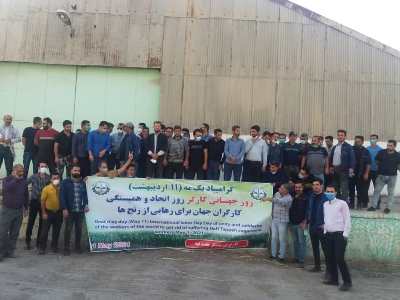
Iran’s semi-official Fars News Agency reported on 8 May that the country’s largest sugarcane factory, Haft Tappeh, has been re-nationalised. The factory was privatised in 2015. Since then, the workers have been fighting for its re-nationalisation, a fight often marked by repression and imprisonment of activists.
A court ruled that there had been numerous irregularities in Haft Tappeh’s privatisation, that it had been sold at a very cheap price and that the new private owners had benefited from rent-seeking activities.
With this decision, the Haft Tappeh workers have achieved a significant, although partial, victory. It is not complete because they have also been demanding workers’ control over the running of the factory, and nationalisation, on its own will not achieve this goal.
At the moment, while the Iranian state has taken control of the factory, it is not clear what it wants to do next. It can be that there are plans to once again privatise the company. Maybe the situation will not become clear until after the 18 June presidential election. However one thing is clear, with its repeated record of using repression, including torture, against the Haft Tappeh workers’ representatives, and those supporting them, the regime has shown that it does not act in workers’ interests.
It is all the more important that the Haft Tappeh workers’ union now continues its campaign for workers’ control and management of the company, and underlines it with actions and strikes to win this demand.
For the developing workers’ movement in Iran, this success at Haft Tappeh is very important. It should be used as a signal to fight for the nationalisation of all the companies that have been privatised in recent decades, and those in crisis. To ensure a real change in the interests of workers, such struggles must be linked to establishing workers’ control and management.
For this, it is necessary to create national structures, as the recent May Day statement signed by 15 workers’ organisations and trade unions called for. In such structures, all organisations representing the interests of the Iranian working class could unite in order to organise, debate, and coordinate the struggles of the class together.
Growing workers’ struggles
This call is against the background of a growing number of workers’ struggles since 2017. It has been reported that in the year up to March 2021, 1,915 protests took place in Iran. These were mainly by workers, teachers and pensioners. This is a fifty percent increase in protests compared to the previous year and, despite the covid pandemic, the highest number for seven years.
An economic crisis, with inflation expected to reach nearly 40% this year, and over 11% unemployment, are the background to these movements. But these struggles have not only centred over these serious economic issues. They have also been against oppression and for democratic rights.
In some of these struggles, more general slogans against the regime have been aired. This makes it more necessary to start a discussion on the foundation of an independent workers’ party, and on what its programme should be. Such a party is necessary to unite the struggles of the workers and youth, but also it would need to argue for a socialist programme that can mobilise the working class and poor to break from the capitalist system.
